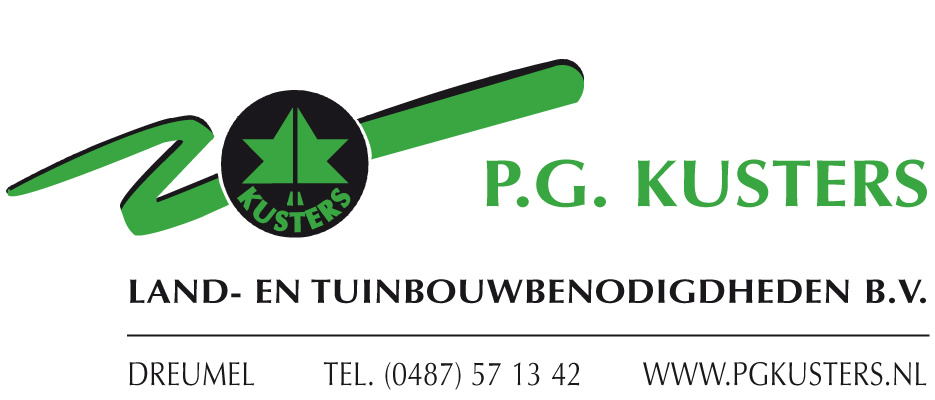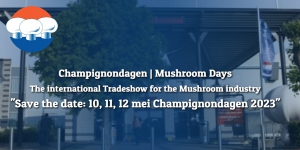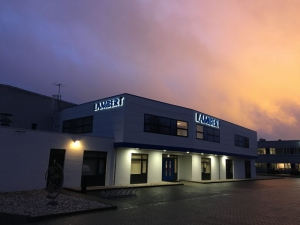
Mushroom Matter
Welcome on our platform. Why MUSHROOM MATTER? Because mushrooms play an important role in our lives as well in business. Our goal is to bring the world the very latest mushroom news with the upmost care to support the positioning of our beloved Mushroom.
Hello and Goodbye
As of 1 December 2022, Örjan Hulshof has taken part in the 'Mushroom team' of TenCate Nicolon, manufacturer of the well-known Nicolon® nets for the mushroom industry.
In the coming period he will further familiarize himself with this interesting branch within TenCate and as of July this year, he will take over all the activities from Maarten Bos, who will then retire.
After his education in International Agricultural Trade, Örjan worked in floriculture and horticulture for about 20 years in his home country and abroad.
TenCate, which has been active in the mushroom industry for more than 40 years, has recently further invested in the machinery for their Nicolon products, following the takeover of TenCate by Solmax, which has enabled it to serve the market even better.
The upcoming Mushroom Days (May 10, 11, 12) are also an excellent opportunity to speak to many people in the mushroom industry. TenCate will also be present there with a stand. We look forward to welcoming you there again.
The move comes at a time when the horticulture industry looks to accelerate its automation efforts to benefit Canadian growers.
Vineland Research and Innovation Centre (Vineland) has announced the transfer of its patented robotic mushroom harvesting technology to Mycionics, a Canadian agtech company located in Putnam, Ontario.
The move comes at a time when the horticulture industry looks to accelerate its automation efforts to benefit Canadian growers with Vineland uniquely positioned to contribute, given its innovative technology portfolio.
Under the terms of the agreement, Vineland’s intellectual property will be incorporated into Mycionics patent portfolio as they commercialize their mobile robotic harvesting system.
Please read the full article here.
Source: Greenhouse Canada
Dutch Mushroom Days 2023
The board of Stichting Champignondagen has announced that the Champignondagen will be organised again. The event for the International Mushroom Sector will take place on 10, 11 and 12 May 2023 in Brabanthallen 's-Hertogenbosch.
The Champignondagen is an excellent opportunity to meet industry colleagues, exchange experiences, expand your relationship network and gain knowledge of the latest developments and technologies. In short, an event you don't want to miss!
You will soon be able to register for the Mushroom Days. Via their website, they will keep you informed about all the latest developments.
Please visit their website here.
The purchase brings Ecovative greater global vertical integration as it expands international production of mycelium materials in fashion, packaging, and food.
Ecovative acquires Lambert Europa Spawn and Substrate facility in the Netherlands, expanding global reach for the company's patented mycelium technologies to more than 5 continents.
GREEN ISLAND, N.Y.--(BUSINESS WIRE)--Ecovative, the world's leading mycelium technology company, today announced the purchase of Lambert Spawn Europa B.V., a state-of-the-art mushroom spawn production facility in the Netherlands, from a subsidiary of Pennsylvania-based Lambert Spawn Company. The purchase vertically integrates a major source of mushroom substrate — mixtures of raw agricultural products inoculated with specialized mushroom strains — within the operations of the world's premier developer of mycelium materials and products. The new line of supply will enable and support Ecovative's consistent and rapid expansion internationally and across all categories as both a producer and supplier to other mycelium companies.
Under Ecovative's ownership, the facility will continue producing spawn to serve its list of existing clients, including mushroom growers and producers of mycelium materials. It will also produce proprietary blends of substrate used to grow mycelium materials. These materials support Ecovative's Forager™ and Mushroom™ Packaging divisions, as well as My™Forest Foods and its popular My™Bacon, alongside a growing list of licensee companies. Forager will use the substrate to supply natural mycelium materials for the fashion and apparel industries, such as leather-like hides and high performance foams, and Mushroom Packaging will use the substrate to produce composite materials used to replace plastic foam packaging.
"Ecovative is committed to providing the world's best mycelium technologies," says Eben Bayer, Ecovative's CEO and co-founder. "We're working closely with Lambert and the facility's incredible team of industry professionals to continue providing existing clients with the same quality products they know and love. This acquisition also positions our company to ensure the highest quality of feedstock for a wide range of new mycelium materials, enabling the best possible products and the capacity to supply our quickly growing global network of customers and licensees as they continue to expand over the coming years."
"We are proud of the state-of-the-art facility we built in Venlo, and the team we gathered to operate it," says Scott McIntyre, Executive Vice President and Co-Owner of Lambert Spawn. "Since collaborating with Ecovative, it has become clear that they are the ideal team with the right expertise of stewarding the facility and caring for its customers, while also creating exciting new opportunities as Lambert continues to focus on serving and growing our North American markets. The Lambert name was built on quality and innovation, and we are glad that Ecovative will bring this same commitment to Lambert Spawn Europa, for everyone's continued success."
The Netherlands-based team and facility will continue to produce the same high quality spawn and substrate, servicing existing mushroom growers and new clients, serving markets in Europe, Middle East, Africa, and South America. The facility employs 17 people, and is capable of producing approximately 20 million pounds of spawn and substrate per year, with the capacity to grow significantly in the near future.
Ecovative already operates the largest production plant for mycelium materials in the world, at its base of operations in Green Island, New York. The acquisition of Lambert Spawn Europa makes it possible to supply high-quality raw materials and mycelium strains to a global network of customers and licensees, in addition to the company's own brands. It also reflects an ongoing investment in the mycelium materials supply chain, the use of existing infrastructure whenever possible, and a big step toward full vertical integration that positions Ecovative as the global leader in scaled supply of high quality raw materials for the emerging, fast-growing mycelium technology industry.
About Ecovative:
Ecovative is a materials science company unlocking the natural potential of mycelium with modern technology. Founded in 2007, Ecovative’s mission is to create next generation materials through mycelium biofabrication and to make mycelium materials accessible to everyone. Leveraging its Mycelium Foundry, Ecovative works with partners throughout the textiles, food and packaging industries to grow better materials for everyday needs. To learn more, visit http://www.ecovative.com.
About Lambert:
The L.F. Lambert Spawn Company was established in 1919. Our founder, Louis Lambert was a pioneer in many mushroom spawn manufacturing techniques. Headquartered in Chester County, Pennsylvania, Lambert has been a staple name in the mushroom industry for over a century. Ownership of the company has changed several times during the company's history, with the McIntyre family proudly at the helm since 1991. The same innovative spirit and dedication to quality continue to be the cornerstones of our business principles to this day.
Contacts
Media Contact:
Lacey Davidson
Marketing Director at Ecovative
This email address is being protected from spambots. You need JavaScript enabled to view it.
In the era of increasing energy costs, GROWTIME has introduced to its offer exceptionally efficient and energy-saving LED lamps for mushroom growing farms - adapted to the IP69 evaporation conditions of the growing rooms. High luminous efficiency (175 lumens per 1W) ensures that your mushroom farm maintains excellent working conditions during picking at a very low cost.
What do you need to know?
- the lamps were designed to operate in difficult environmental conditions
- light, hermetic industrial luminaire (made of polycarbonate PC) makes them suitable for lighting rooms with difficult working conditions
- the lighting is easy to install and keep clean
- it’s worth noting that the lamps can be used in rooms with high humidity, dustiness (they meet the IP69 condition) and very high temperature
- we’re confident in our product and for this reason, we provide a 3-year warranty
Technical parameters:
- mounting: suspended / surface (stainless handles)
- housing: polycarbonate covered with a special coating resistant to harmful chemicals
- closures: expansion plugs made of polycarbonate, glass fiber reinforced
- light source: OSRAM T8 LED tube
- lifetime (L80B50): 60,000 h, HO version 75,000 h
- operation temperature: -20 OC +50 OC
- resistance rating: IP69
- power: 23,4 Watt
- visual light: 4100 l
- temperature color: 3000 K, 4000K, 6500 K (recommended 6500 K)
- beam angle: 190 degrees
- electrical connection: cable 2 x 1.0 mm², 1 m. (class l), optional: cable connector, cable with other lengths
- in the event of the light source becoming worn out, the design allows easy replacement of the LED element without losing the sealing
We invite everyone who's interested in our solution to contact us via our website or directly by phone +48 513 129 339.
If you place an order for the lamps till 19.11.2022 you will receive a 10% discount.

































